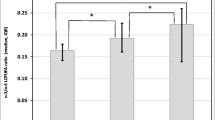Abstract
The importance of dietary lipids during childhood is evident, as they are necessary for correct growth and development of the newborn. When breastfeeding is not possible, infant formulas are designed to mimic human milk as much as possible to fulfill infant’s requirements. However, the composition of these dairy products is relatively constant, while human milk is not a uniform bio-fluid and changes according to the requirements of the baby. In this study, breast milk samples were donated by 24 Spanish mothers in different lactation stages and different infant formulas were purchased in supermarkets and pharmacies. Gas chromatography coupled to flame ionization detection was used for the fatty acid determination. Compared to breast milk, first-stage formulas are apparently very similar in composition; however, no major differences were observed in the fatty acid profiles between formulas of different lactation stages. The Galician women breast milk has a fatty acid profile rich in oleic acid, linoleic acid, arachidonic acid, and docosahexaenoic acid. When comparing human milk with formulas, it becomes evident that the manufacturers tend to enrich the formulas with essential fatty acids (especially with α-linolenic acid), but arachidonic and docosahexaenoic acid levels are lower than in breast milk. Additionally, the obtained results demonstrated that after 1 year of lactation, human milk is still a good source of energy, essential fatty acids, and long-chain polyunsaturated fatty acids for the baby.
Similar content being viewed by others
References
Barreiro R, Regal P, Díaz-Bao M, Fente CA, Cepeda A (2015) Analysis of naturally occurring steroid hormones in infant formulas by HPLC-MS/MS and contribution to dietary intake. Foods 4(4):605–621
Chowdhury R, Sinha B, Sankar MJ, Taneja S, Bhandari N, Rollins N, Bahl R, Martines J (2015) Breastfeeding and maternal health outcomes: a systematic review and meta-analysis. Acta Paediatr 104(S467):96–113
Crawford MA, Wang Y, Forsyth S, Brenna JT (2015) The European Food Safety Authority recommendation for polyunsaturated fatty acid composition of infant formula overrules breast milk, puts infants at risk, and should be revised. Prostaglandins Leukot Essent Fatty Acids (PLEFA) 102:1–3
Dowling S, Brown A (2013) An exploration of the experiences of mothers who breastfeed long-term: what are the issues and why does it matter? Breastfeed Med 8(1):45–52
FAO-WHO (2010) Fats and fatty acids in human nutrition: Report of an expert consultation. FAO Food and Nutrition paper No. 91.Geneva, November 10–14, 2008. FAO, Rome
Green Corkins K, Shurley T (2016) What’s in the bottle? A review of infant formulas. Nutr Clin Pract. doi:10.1177/0884533616669362
Hennet T, Borsig L (2016) Breastfed at Tiffany’s. Trends Biochem Sci 41(6):508–518
Innis SM (2007) Fatty acids and early human development. Early Hum Dev 83(12):761–766
Joardar A, Sen AK, Das S (2006) Docosahexaenoic acid facilitates cell maturation and beta-adrenergic transmission in astrocytes. J Lipid Res 47(3):571–581. doi:10.1194/jlr.M500415-JLR200
Mandel D, Lubetzky R, Dollberg S, Barak S, Mimouni FB (2005) Fat and energy contents of expressed human breast milk in prolonged lactation. Pediatrics 116(3):e432–e435. doi:10.1542/peds.2005-0313
Martin CR, Ling P, Blackburn GL (2016) Review of infant feeding: key features of breast milk and infant formula. Nutrients 8(5):279
Martinez A, Ballew M (2011) Infant formulas. Pediatr Rev 33
Martínez B, Miranda JM, Franco CM, Cepeda A, Rodríguez JL (2012) Development of a simple method for the quantitative determination of fatty acids in milk with special emphasis on long-chain fatty acids. CyTA - J Food 10(1):27–35. doi:10.1080/19476337.2010.538860
Stam J, Sauer PJ, Boehm G (2013) Can we define an infant’s need from the composition of human milk? Am J Clin Nutr 98(2):521S–528S. doi:10.3945/ajcn.112.044370
Author information
Authors and Affiliations
Corresponding author
Ethics declarations
This study has been approved by the Galician Clinical Research Ethics Committee (Comité Ético de Investigación Clínica de Galicia) and adhered to the principles of the Helsinki Declaration of 1975 as revised in 1983. Written informed consent was obtained from all participants.
Additional information
This article forms part of a special issue of the Journal of Physiology and Biochemistry entitled “Impact of lifestyles patterns on human health: Integrated approach from the child to the elderly”
Rights and permissions
About this article
Cite this article
Barreiro, R., Regal, P., López-Racamonde, O. et al. Comparison of the fatty acid profile of Spanish infant formulas and Galician women breast milk. J Physiol Biochem 74, 127–138 (2018). https://doi.org/10.1007/s13105-017-0580-2
Received:
Accepted:
Published:
Issue Date:
DOI: https://doi.org/10.1007/s13105-017-0580-2




